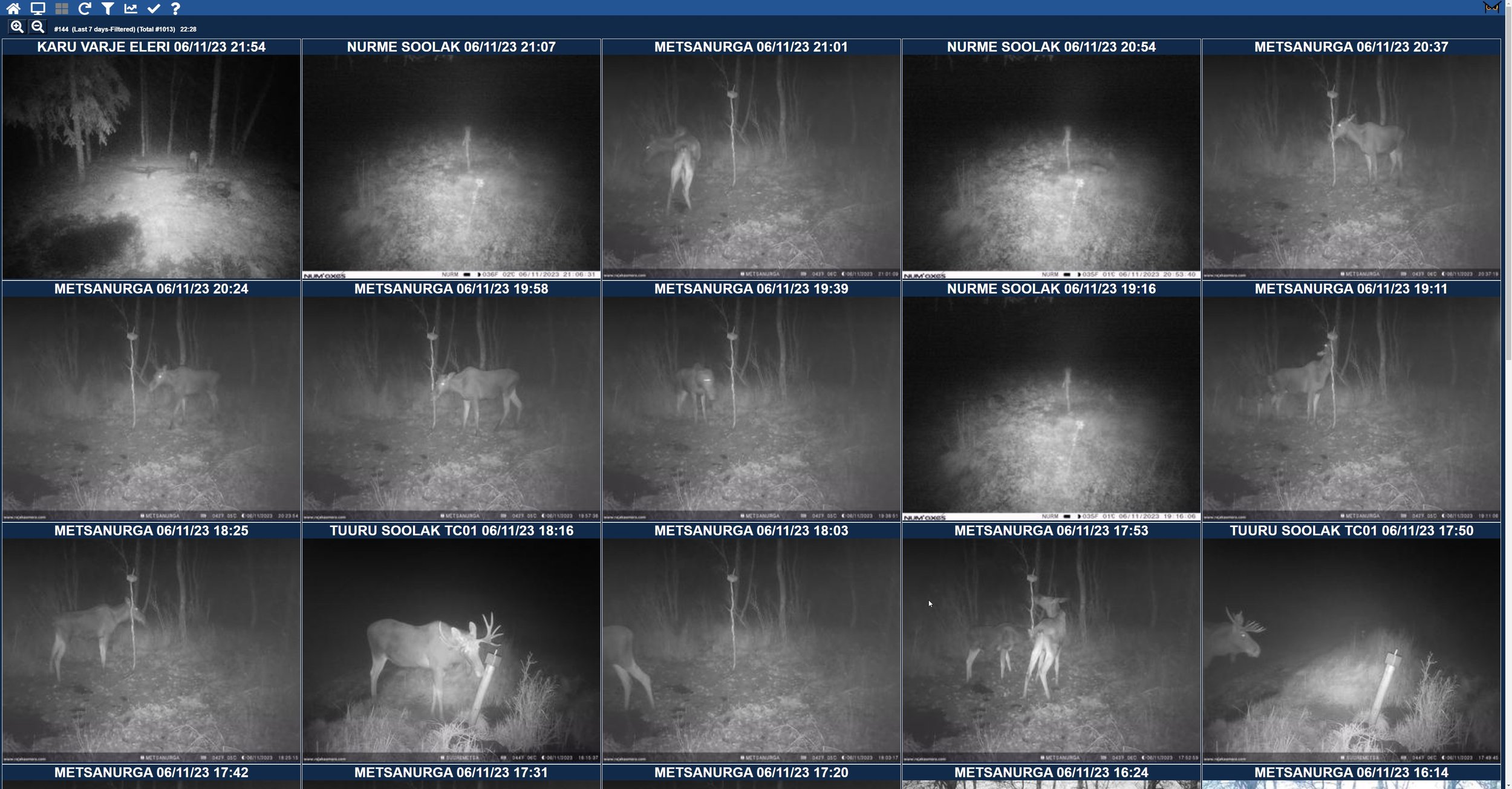What Are the Best SD Cards for Trail Cameras?
The short answer is that it depends. It depends on how you will use your trail camera and what kind of cards your camera supports. Many trail cameras only support SD cards up to 32GB, so check the camera specifications before purchasing. I will cover different use cases.
Disclosure: This post contains Amazon affiliate links. As an Amazon Associate, I earn from qualifying purchases.
Case 1: You have a camera that can connect over a mobile network and deliver the images to an email or a dedicated app. Most cameras have a function that will automatically delete older images when the memory card is full. I recommend enabling it. If you are interested in historical photos, I recommend a smaller card.
Samsung 32GB EVO Plus with Adapter
I have personally used these for many years in different trail cameras. They are usually inexpensive.
Buy from: Amazon US / Amazon UK / Amazon IT
Samsung PRO Endurance 32GB MicroSDXC Memory Card with Adapter
I have not used 32GB versions of this card, but I use 128GB and 256GB cards in my trail cameras for video.
Buy from: Amazon US / Amazon DE / Amazon UK / Amazon FR / Amazon ES / Amazon IT
SanDisk 32GB Ultra microSDHC UHS-I Memory Card with Adapter
I have personally used these for many years in different trail cameras. They are usually inexpensive.
Buy a single card: Amazon US / Amazon DE / Amazon UK / Amazon FR / Amazon ES / Amazon IT
Buy a two-pack card: Amazon US / Amazon DE / Amazon UK / Amazon IT
SanDisk 32GB Ultra SDHC UHS-I Memory Card
This card is a regular full-size SD card, not a microSD card. If your camera uses full-size SD cards, I recommend using this card. It avoids issues that may come from using a microSD to SD adapter. I use these cards in some of my LTE trail cameras.
Buy from: Amazon US / Amazon DE / Amazon UK / Amazon FR / Amazon ES / Amazon IT
Case 2: You are taking a lot of images, and you want to keep them.
A larger SD card is useful here, but check your camera specifications for SD card support. Many cameras only support up to 32GB cards.
Samsung EVO Select Micro SD-Memory-Card + Adapter, 128GB
This card will fit a lot of images.
Buy from: Amazon US / Amazon DE / Amazon UK / Amazon ES / Amazon IT
Samsung 128GB EVO Plus Class 10 Micro SDXC with Adapter
This card will fit a lot of images.
Buy from: Amazon US / Amazon DE / Amazon UK / Amazon FR / Amazon ES / Amazon IT
SanDisk 128GB Ultra microSDXC UHS-I Memory Card with Adapter
This card is highly rated and has excellent performance. This card will fit thousands of images. Again, check your camera specifications for SD card support. Many cameras only support up to 32GB cards.
Buy from: Amazon US / Amazon DE / Amazon UK / Amazon FR / Amazon ES / Amazon IT
SanDisk 128GB Ultra SDXC UHS-I Memory Card
This card is a regular full-size SD card, not a microSD card. If your camera uses full-size SD cards, I recommend using this card. It avoids issues that may come from using a microSD to SD adapter.
Buy from: Amazon US / Amazon DE / Amazon UK / Amazon FR / Amazon ES / Amazon IT
Case 3: You are using your trail camera to record videos. Recording videos is my most frequent use case. I recommend 128GB/256GB or 512GB "Endurance" cards. Endurance cards are designed explicitly for devices that record video.
Samsung PRO Endurance MicroSDXC Memory Card with Adapter
In addition to trail cameras, these cards work in dash cams, security cams, etc. Depending on video resolution and bitrate, these cards can store several hours of video. I use both 128GB and 256GB cards in my trail cameras.
Buy 128GB card: Amazon US / Amazon DE / Amazon UK / Amazon FR / Amazon ES / Amazon IT
Buy 256GB card: Amazon US / Amazon DE / Amazon UK / Amazon FR / Amazon ES / Amazon IT
SanDisk High Endurance Video MicroSDXC Card with Adapter
In addition to trail cameras, these cards work in dash cams, security cams, etc. Depending on video resolution and bitrate, these cards can store several hours of video. I use SanDisk High Endurance 256GB cards in my trail cameras.
Buy 128GB card: Amazon US / Amazon DE / Amazon UK / Amazon FR / Amazon ES / Amazon IT
Buy 256GB card: Amazon US / Amazon DE / Amazon UK / Amazon FR / Amazon ES / Amazon IT
SanDisk MAX Endurance microSDXC Card with Adapter
Premium line SanDisk Endurance SD cards. In addition to trail cameras, these cards work in dash cams, security cams, etc. Depending on video resolution and bitrate, these cards can store several hours of video. I have not used these cards in my trail cameras.
Buy 128GB card: Amazon US / Amazon DE / Amazon UK / Amazon FR / Amazon ES / Amazon IT
Buy 256GB card: Amazon US / Amazon DE / Amazon UK / Amazon FR / Amazon ES / Amazon IT
SanDisk Ultra SDXC UHS-I Memory Card
NB! This card is not an "Endurance" card. This card is a regular full-size SD card, not a microSD card. If your camera uses full-size SD cards and you have issues using microSD cards with an adapter, I recommend you try this card.
Buy 128GB card: Amazon US / Amazon DE / Amazon UK / Amazon FR / Amazon ES / Amazon IT
Buy 256GB card: Amazon US / Amazon DE / Amazon UK / Amazon FR / Amazon ES / Amazon IT


